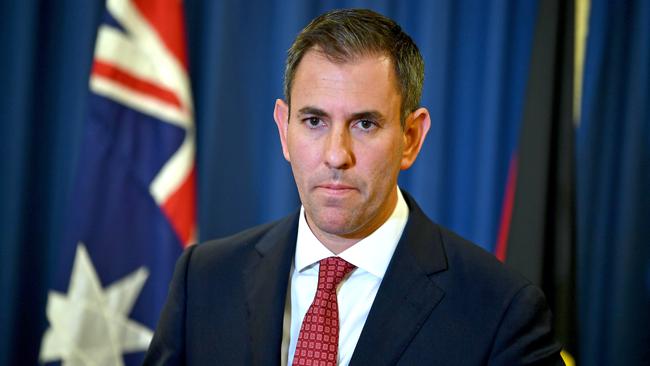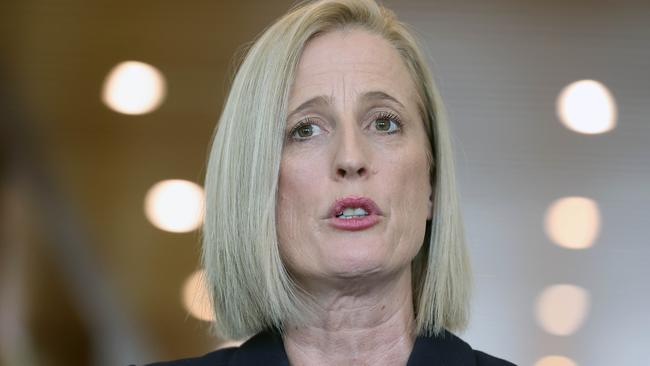
In the Fin and in many interviews with this newspaper, Walsh often lashed fashionable causes that just propped up vested interests. One of his bugbears was the clamour in the 1980s and ’90s – persisting today – for ever more public money for childcare, especially for well-paid professional women.
The new Labor government came to power in May promising to lift the cut-off for childcare subsidies to $530,000 a year, at a cost of $5.4bn over four years. A second stage would ensure the government pays 90 per cent of childcare for all families under the cutoff – about 97 per cent of all families. Walsh would have called it middle-class welfare.
This column does not expect new Finance Minister Katy Gallagher to be as diligent about the public purse as Walsh was. And new Treasurer Jim Chalmers is no Paul Keating, even if Chalmers did his political science PhD on Keating.
Chalmers was schooled at the feet of another former treasurer, now ALP national president, Wayne Swan. Chalmers was Swan’s deputy chief of staff and principal adviser from 2007-10, and chief of staff from 2010-13. It was Swan who announced four future surpluses in the first sentence of his 2012 budget speech that ended up being deficits of $18bn, $30bn, $35bn and $37bn.
Swan bequeathed the nation tens of billions of dollars a year of extra public spending on the pet projects of two Labor leaders: Julia Gillard’s Gonski school funding reforms and her disability minister Bill Shorten’s National Disability Insurance Scheme. NDIS spending is set to blow out from $30bn this year to $60bn in 2030.
Childcare federal spending has risen from $500m in 2000 to $10bn this year.
Labor did not cost the 90 per cent promise in its new policy but the Coalition claimed it would add $63bn to federal childcare costs over a decade.
The Reserve Bank has lifted interest rates three times in a bid to fight inflation – which is expected to reach 7 per cent this year – and the government is facing a potential total federal debt of $1 trillion in the wake of Covid spending.
So are Chalmers’ proposed spending plans pulling in the opposite direction from monetary policy? Few journalists have challenged Chalmers’ claim that free childcare will reduce inflation and lift economic activity. Yet evidence from studies here, in the US and he UK are ambiguous at best on childcare’s improvements to women’s workforce participation, early childhood education results, inflation and economic growth.
To his credit, ABC’s stand-in RN Breakfast host Hamish Macdonald challenged Chalmers on this point in an interview last Wednesday. Chalmers claimed making childcare cheaper was one of the most important things the government could do to reduce inflation. In response Macdonald asked: “What stimulus are you prepared to take out of the economy to help contain inflation?”

On educational grounds the case for more spending is ambiguous. Australia has never spent more on early childhood learning, on schools and on teachers, yet our performance in international testing continues to go backwards. This is part poor curriculum, part substandard teachers, part lack of parental input and part lack of discipline in schools and at home.
This paper’s Judith Sloan on May 13 acknowledged there was some evidence for claims by the Australia Childcare Alliance that increased participation in the year before school could be beneficial. “This is a different issue to children attending childcare from the time they are babies,” she wrote.
The Productivity Commission does suggest there is strong evidence of the benefits of early childhood learning for children from very disadvantaged backgrounds, but this does not support Labor’s subsidies for the wealthy.
The evidence has been clear for decades that increasing subsidies for childcare simply increases prices. It’s a case Senator Walsh made in the 1980s. The latest 2015 Productivity Commission report on childcare lists four reasons for childcare costs rising faster than even health care costs:
1. Cost of regulated improvements to childcare quality.
2. Wages and salary costs above minimum rates.
3. Market imperfections that reduce competitive pressure.
4. Price pressure resulting from government subsidies to childcare.
Points 1 and 2 relate to what Senator Walsh used to call “creeping credentialism” – the long push to make childcare workers seem like teachers, driving non-unionised backyard childcare operators out of the industry.
This has been reflected in the National Quality Framework introduced in 2012 by the Gillard government.
A separate study by Eugenie Joseph for the Centre for Independent Studies in August 2018, titled “Why childcare is not affordable’’, was scathing of the NQF which made it more expensive for workers to enter the childcare sector, increased centre wage bills by mandating higher qualifications and lower staff-to-child ratios, and created artificial labour shortages.
The paper concludes: “Quality regulations raise costs for parents, while government subsidies attempt to lower costs for parents.”
And because childcare is designed to encourage women back to the workforce, subsidies “are activity-tested on the basis of parents working. (But) if the purpose of childcare is early childhood education, there is no justification for arbitrarily restricting access … on the basis of parental employment.”
On women’s workforce participation, the evidence for childcare is not strong.
While the Grattan Institute and PwC have made heroic claims, the PC suggests financial need and personal preference of the mother may be the drivers of decisions to return to work.
A study in The Conversation in 2014 by the Institute of Fiscal Studies at the University of Essex looked at participation rates after the introduction of universal free childcare for three and four-year-olds in the UK in 1998. It found an expansion of free care for three-year-olds increased child participation in England from 40 to 90 per cent but lifted employment among mums whose youngest child was three by just 3 per cent.
On inflation, recent research from the US, where free childcare is part of President Joe Biden’s “build back better” post-pandemic spending Bill, is also equivocal.
The Brookings Institution in June supported the childcare reforms saying they would have lessened inflation had they been implemented last year. But passing the Bill this year would delay any benefits and “any new childcare spending would help fight inflation, but only gradually and by a small amount”.
A study by the Wharton business school at the University of Pennsylvania found universal childcare for three and four-year-olds would do little to lift GDP but would increase wages for workers in the sector, require $US351bn in construction costs over a decade and increase government debt. All would be inflationary.
Labor is effectively emulating Biden’s childcare plan just as the latest Australian Institute of Family Studies analysis of 2018 reforms suggests the changes are effectively targeting low-income families and disadvantaged children. It’s the sort of tightly targeted policy reform Peter Walsh would have supported.
And journalists at the time would have agreed.








Few journalists are prepared to test modern economic pieties the way the late Labor senator and finance minister Peter Walsh used to in regular columns in The Australian Financial Review.